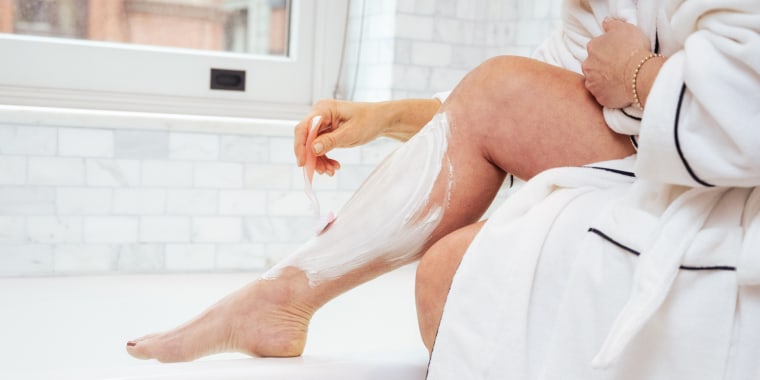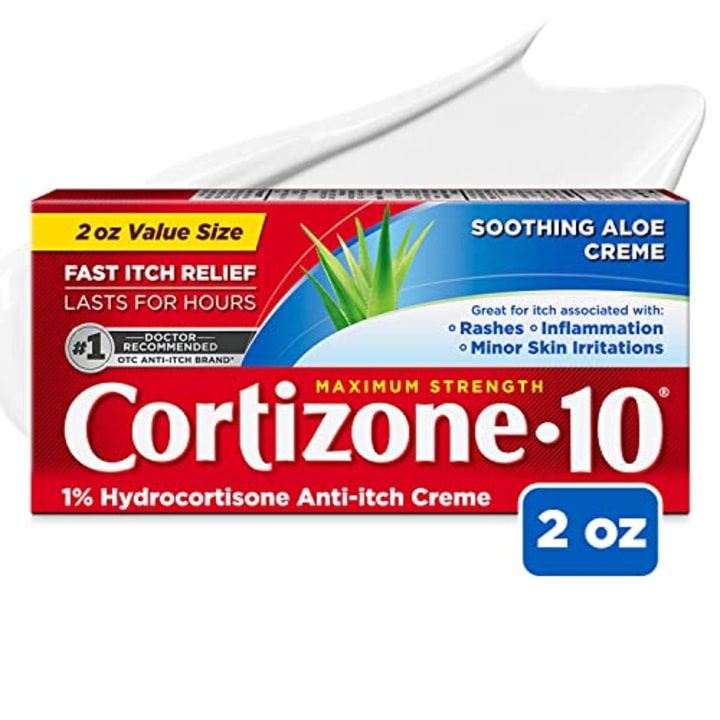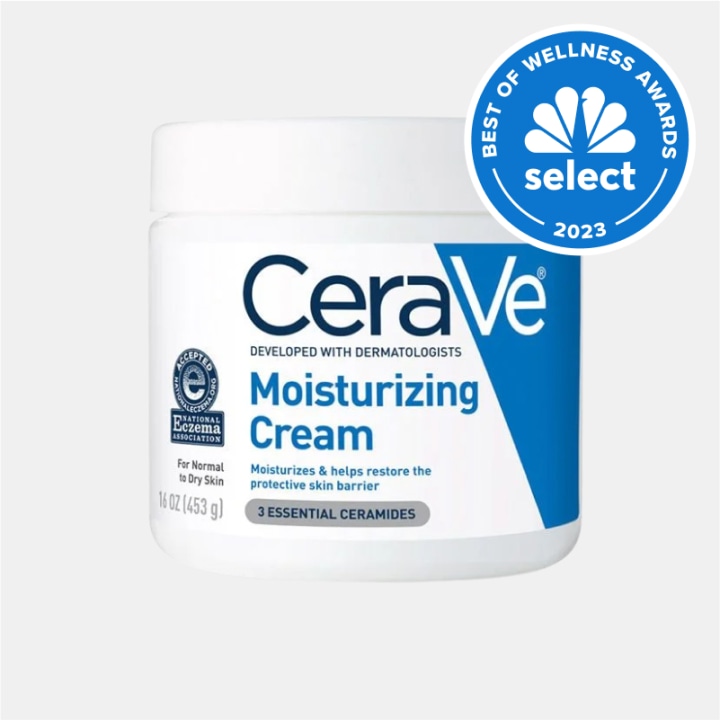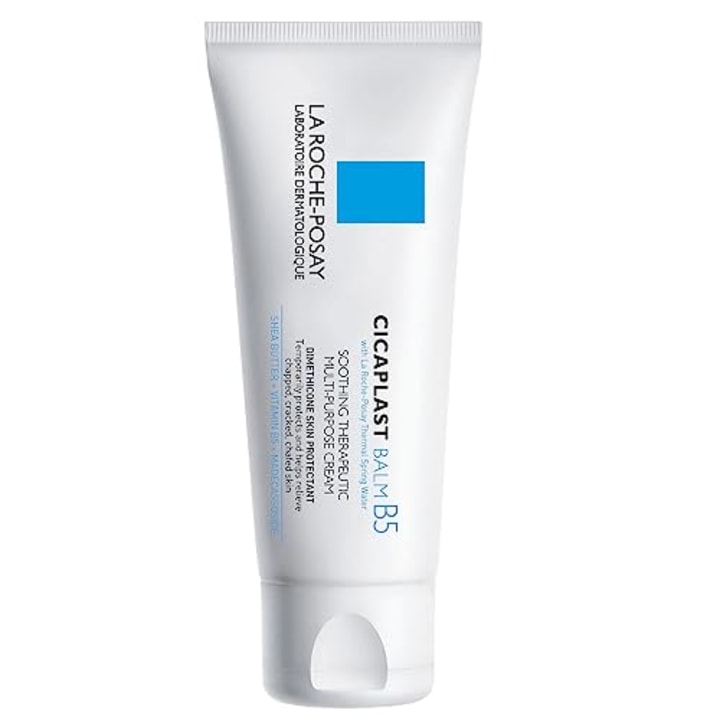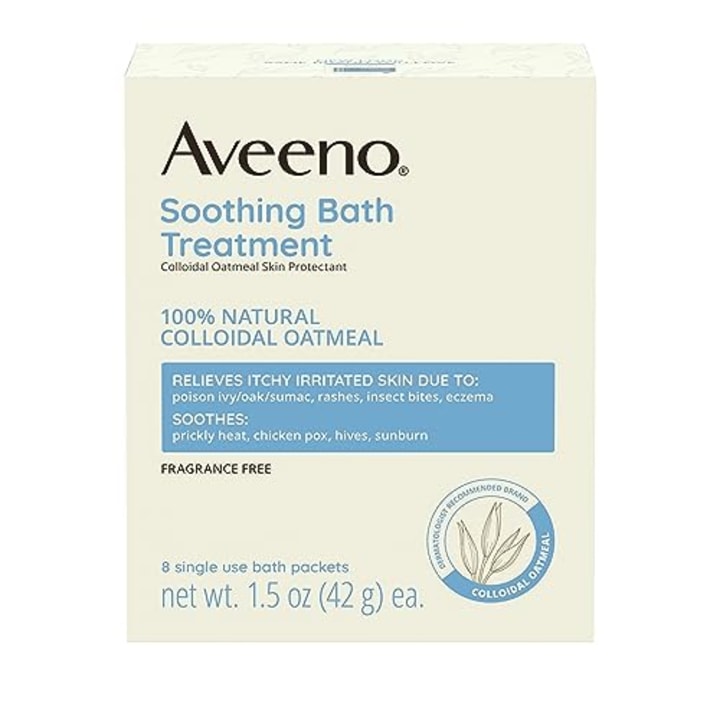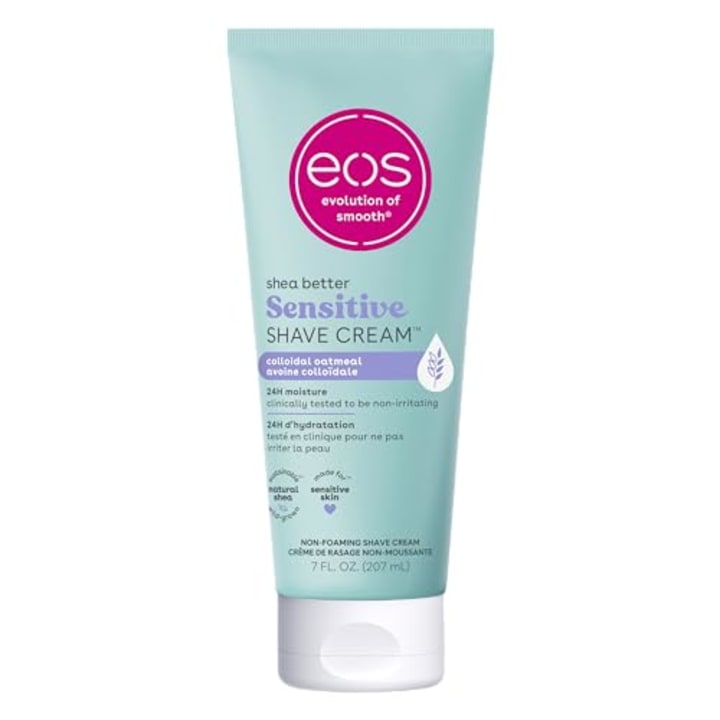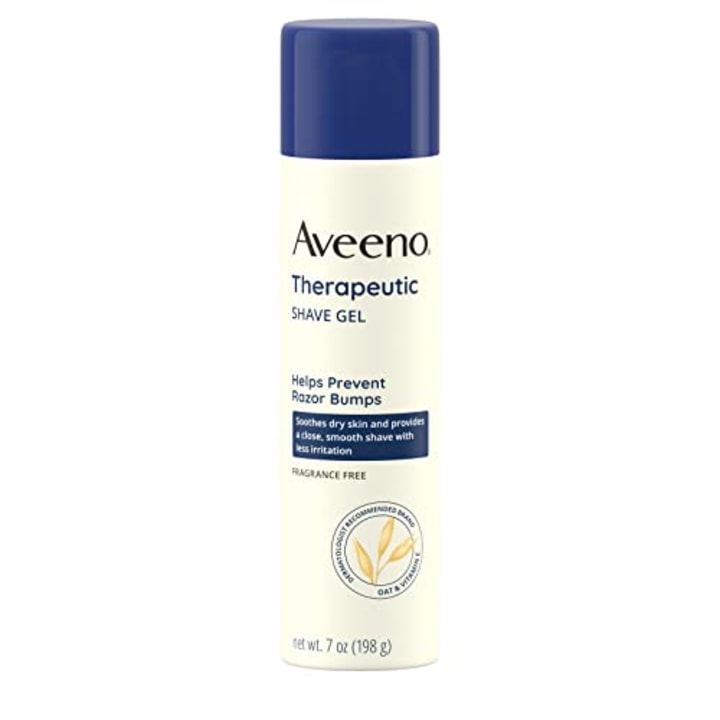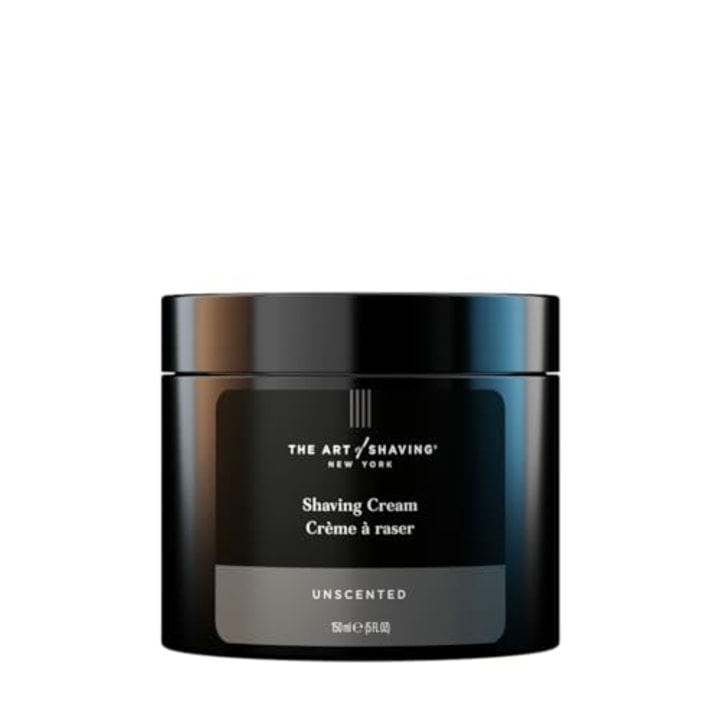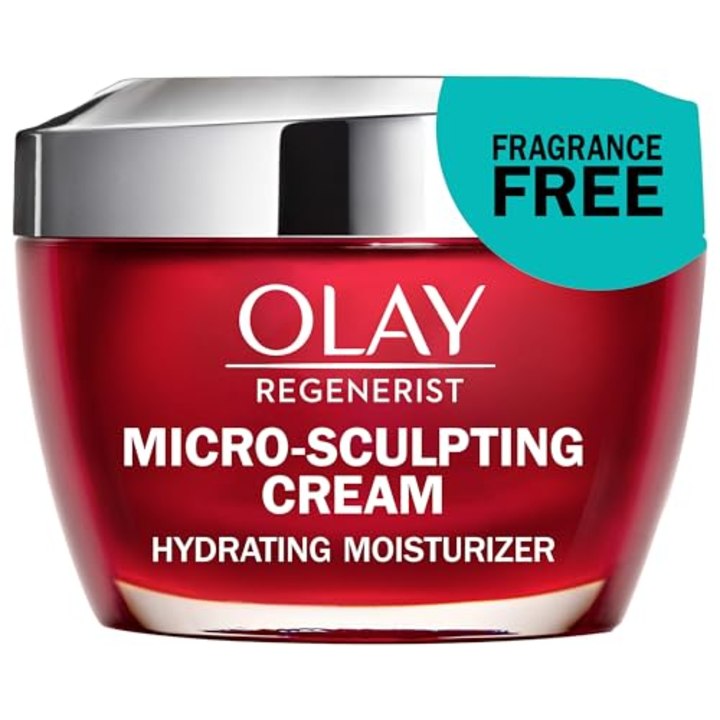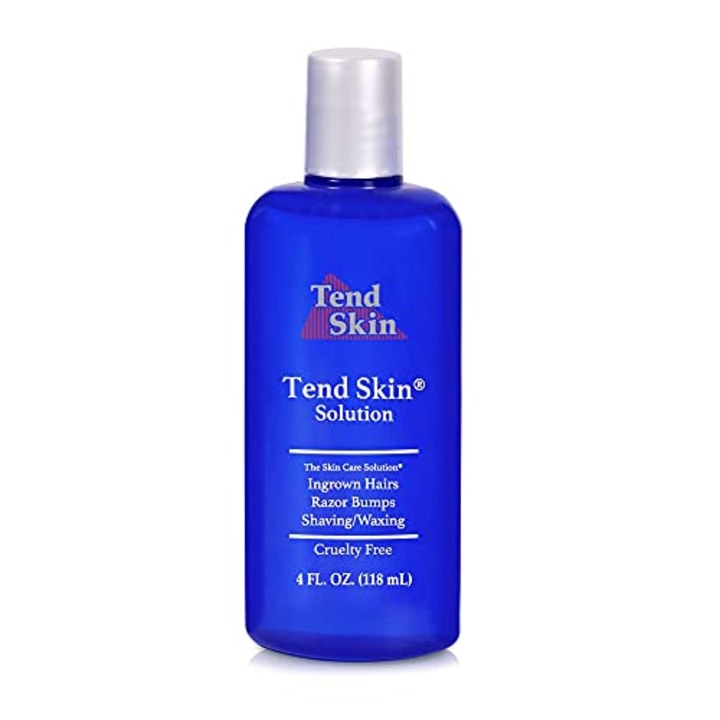The last thing you want to see after shaving is patches of red, bumpy, inflamed skin, also known as razor burn. Anyone can experience it, but those with sensitive skin are especially vulnerable, says Dr. Hadley King, a board-certified dermatologist based in New York. Thankfully, razor burn is easily treatable, and you can prevent it by practicing proper shaving technique, like using a sharp razor, applying shaving cream and moisturizing with body lotion.
I talked to dermatologists about how to treat razor burn, as well as how to prevent it in the first place. Using their guidance, I rounded up the best razor burn treatments and preventatives that experts recommend, plus options NBC Select staff use themselves.
SKIP AHEAD Best razor burn treatments | Best products for preventing razor burn | Shaving tips to help you avoid razor burn
How we picked the best razor burn treatments and preventatives
Treating and preventing razor burn require different types of products, so what to look for when shopping depends on your end goal.
- Treating razor burn: If your skin is already irritated from shaving, prioritize moisturizing products that relieve itching, stinging and burning. Look for options with hydrocortisone, a soothing steroid that combats itchiness, and emollients, which form a film on the skin’s outer layer to lock in moisture and soften it, says King. Also use a gentle body wash to cleanse the skin as it heals to prevent further irritation, says Dr. Robert Finney, a board-certified cosmetic dermatologist and hair loss expert based in New York City. If razor burn is making you very uncomfortable, you can place cold compresses on the skin to calm inflammation before applying an ointment or cream, says Dr. Camila Antia, a board-certified dermatologist at The Skin People Dermatology in Houston, Texas.
- Preventing razor burn: The best way to prevent razor burn is to use shaving cream made with emollients and a sharp, clean razor. An emollient-rich shaving cream protects and moisturizes the skin barrier, which decreases the chance of irritation and inflammation when it meets a razor’s blades. You should also moisturize after shaving to further hydrate and soften skin. Antia recommends buying a moisturizer with ceramides.
The best razor burn treatments
Best anti-itch cream: Cortizone-10 Maximum Strength Soothing Aloe Creme
- Max-strength hydrocortisone
- Travel-friendly tube
- Not recommended for the face
Cortizone-10 contains 1% hydrocortisone, which is the highest concentration allowed in over-the-counter products, and aloe to soothe skin, according to the brand. The fragrance-free cream can alleviate itching for hours after application, and it’s multifunctional: You can also use it for eczema, psoriasis, poison ivy and bug bites. Since the product comes in a little tube, I find it easy to travel with and always throw it in my toiletry bag with my razor.
Use on: Body
Best ointment: Aquaphor Healing Ointment
- Forms protective skin barrier
- Multiple formulations
- Greasy feel
Petroleum jelly is the main ingredient in Aquaphor, an ointment that forms a protective barrier on skin to help it hold onto moisture while also healing dry, cracked, irritated areas. Aquaphor — a product we’ve also recommended for treating dry hands, chapped lips and sunburns— comes in tubes and tubs of various sizes, and you can purchase the fragrance-free ointment as a stick or spray. The spray is especially helpful if you’re applying it to areas like your underarms or hard-to-reach places like the back of your legs, in my experience.
Use on: Face and body
Best moisturizer: CeraVe Moisturizing Cream
- Treatment and preventative
- Rich texture
- Nothing to note at this time
You can use this CeraVe moisturizer (a Select Wellness Award winner) to treat razor burn, as well as hydrate your skin post-shave and thus prevent razor burn from occurring again, experts told us. The fragrance-free cream has hyaluronic acid, which helps skin hold onto moisture, and ceramides. It’s also noncomedogenic, meaning it won’t clog pores. The cream has a rich, velvety texture and it doesn’t leave behind a sticky, greasy residue.
Use on: Face and body
Best balm: La Roche-Posay Cicaplast Balm
- Reduces irritation
- Matte finish
- Nothing to note at this time
La Roche-Posay’s Cicaplast Balm is one of Antia’s favorite treatments to calm down irritated skin affected by razor burn. “It’s bland and doesn’t contain a lot of alcohol, so it’s soothing,” she says. The fragrance-free, noncomedogenic balm contains moisturizing ingredients like dimethicone, glycerin, shea butter and vitamin B5. It has a rich texture and a matte finish.
Use on: Face and body
Best soak: Aveeno Soothing Oatmeal Bath Treatment
- Pre-measured packets
- Safe for sensitive skin
- 15 to 30-minute treatment
- Not recommended for the face
Colloidal oatmeal is an emollient, so it softens and soothes skin, making it great for treating razor burn, says Antia. She specifically recommends Aveeno’s oatmeal bath treatment, a powder you sprinkle into warm water and soak in. You can also add a little powder to a bowl with warm water and apply it to patches of irritated skin. The treatment comes in pre-measured, single-use packets, and the brand recommends soaking affected areas for 15 to 30 minutes at a time for the best results.
Use on: Body
The best products for preventing razor burn
Best shaving cream: Eos Shea Butter Sensitive Skin Shave Cream
- Doubles as body lotion
- Multiple scents available
- Nothing to note at this time
The best way to prevent razor burn is to use shaving cream or gel, which helps the razor glide smoothly against skin and minimizes potential irritation, says Dr. Joshua Zeichner, the director of cosmetic and clinical research in dermatology and an associate professor of dermatology at Mount Sinai Hospital. Dry shaving (shaving without water, soap, shaving cream or similar products) often leads to razor burn — if the razor has nothing to help it glide, there’s more friction between it and your skin, which could lead to a rash.
Eos’ shaving cream doubles as a body lotion — after you use it with your razor, you can rub what’s leftover into skin or rinse it off. The non-foaming shaving cream, which comes recommended by King, is made with moisturizing colloidal oatmeal and soothing aloe vera, as well as emollients like shea butter and shea oil. You can purchase the shaving cream in a fragrance-free version or in scents like vanilla and coconut.
Use on: Body
Best shaving gel: Aveeno Therapeutic Shave Gel
- Lightweight feel
- Safe for sensitive skin
- Nothing to note at this time
Aveeno’s fragrance-free Therapeutic Shave Gel is one of Zeichner’s favorite options, and it’s specifically made for dry, sensitive skin. It’s made with hydrating colloidal oatmeal and vitamin E. The product has a gel consistency when it comes out of the pump, but it thickens and becomes creamy once you lather it on skin, according to the brand.
Use on: Body
Best facial shaving cream: The Art of Shaving Unscented Shaving Cream
- Non-drying
- Safe for sensitive skin
- Nothing to note at this time
If you’re looking for a shaving cream to use on your face, Antia recommends this one since it’s alcohol-free and won’t dry out your skin. It softens and lifts hair for a close, comfortable shave, according to the brand, and offers a rich, foamy lather. The fragrance-free, noncomedogenic shaving cream contains glycerin and coconut acid.
Use on: Face
Best post-shave cream: Olay Regenerist Micro-Sculpting Cream
- Strengthens skin barrier
- Hydrating
- Nothing to note at this time
Moisturizing the skin post-shave is crucial, says Zeichner. While shaving, you strip away the outermost layers of skin, so using cream afterward repairs the barrier, keeping it soft and hydrated. Zeichner recommends using this cream, which contains niacinamide, a form of vitamin B3 that soothes and strengthens the skin barrier, prepping it for the next time you shave. The fragrance-free cream is also made with hyaluronic acid to hydrate skin. Although this is technically a face moisturizer, you can apply it to other areas you shave, like your legs and underarms, says Zeichner.
Use on: Face and body
Best post-shave serum: iS Clinical Hydra-Cool Serum
- Lightweight feel
- Cooling
- Spot-test on sensitive skin
If you find creams, moisturizers and lotions too heavy, this serum, which is one of Finney’s favorites, offers similar benefits with a more lightweight feel. It has hyaluronic acid and menthol, a chemical naturally found in mint plants that offers a cooling effect, according to the brand. These ingredients work together to repair the skin barrier, hydrate it and reduce redness after you shave, says Finney.
Use on: Face
Best after shave: Tend Skin Solution
- Reduces redness
- Dries quickly
- Spot-test on sensitive skin
Tend Skin Solution reduces redness after you shave and decreases the chance that a razor burn rash or ingrown hairs will pop up in the following days, says Antia. It’s an alcohol-based product, so it’s best to use on non-irritated skin — if you use it on irritated skin, it will likely sting, she says. Apply the liquid to a cotton pad or cotton ball and swipe it over dry areas you recently shaved. Tend Skin takes about five to 10 seconds to dry, and once it does, you can layer moisturizer on top.
Use on: Face and body
How to avoid razor burn while shaving
Practicing proper shaving technique is the key to avoiding razor burn and razor bumps. We asked experts to share some of their shaving tips, which apply to any part of the body you’re shaving.
- Spend about 10 minutes in warm water to soften the outer layer of skin before shaving. This makes it easier to remove hair and decreases the risk of razor burn, says King.
- Before you shave, gently exfoliate the skin with a warm, wet washcloth or a gentle moisturizing scrub like Dove Gentle Exfoliating Body Wash, which King recommends.
- Always shave in the direction that hair grows, says Dr. Jeremy Brauer, a board-certified dermatologist and founder of Spectrum Skin and Laser in New York. Use short, light strokes and don’t increase pressure as you go. Zeichner suggests rinsing your razor every two to three strokes, too. Try your best not to shave over the same area more than once.
- After you shave, rinse your skin with cool water and pat dry. Be sure to moisturize the skin after shaving, says Brauer.
- Always shave with a sharp, clean blade and choose a quality razor, says King. If you’re shaving your legs or bikini line, look for a razor that has multiple blades and a pivoting head so it can adjust to your body’s curves. King also suggests purchasing a razor with soothing strips on the blade, which help protect the skin while shaving.
Meet our experts
At NBC Select, we work with experts who have specialized knowledge and authority based on relevant training and/or experience. We also take steps to ensure that all expert advice and recommendations are made independently and with no undisclosed financial conflicts of interest.
- Dr. Joshua Zeichner is the director of cosmetic and clinical research in dermatology and an associate professor of dermatology at Mount Sinai Hospital.
- Dr. Hadley King is a board-certified dermatologist based in New York.
- Dr. Robert Finney is a board-certified cosmetic dermatologist and hair loss expert based in New York City.
- Dr. Jeremy Brauer is a board-certified dermatologist, dermatologic surgeon and founder of Spectrum Skin and Laser in New York.
- Dr. Camila Antia is a board-certified dermatologist at The Skin People Dermatology in Houston, Texas.
Why trust NBC Select?
Zoe Malin is an associate updates editor at NBC Select who writes about skin care, including articles on ingrown hair, razor burn, sunscreen for acne-prone skin and sunburns. For this article, she interviewed five experts about how to treat and prevent razor burn. Using their guidance, Malin put together a list of products dermatologists recommend and those NBC Select staff have tested.
Catch up on NBC Select’s in-depth coverage of personal finance, tech and tools, wellness and more, and follow us on Facebook, Instagram, Twitter and TikTok to stay up to date.
